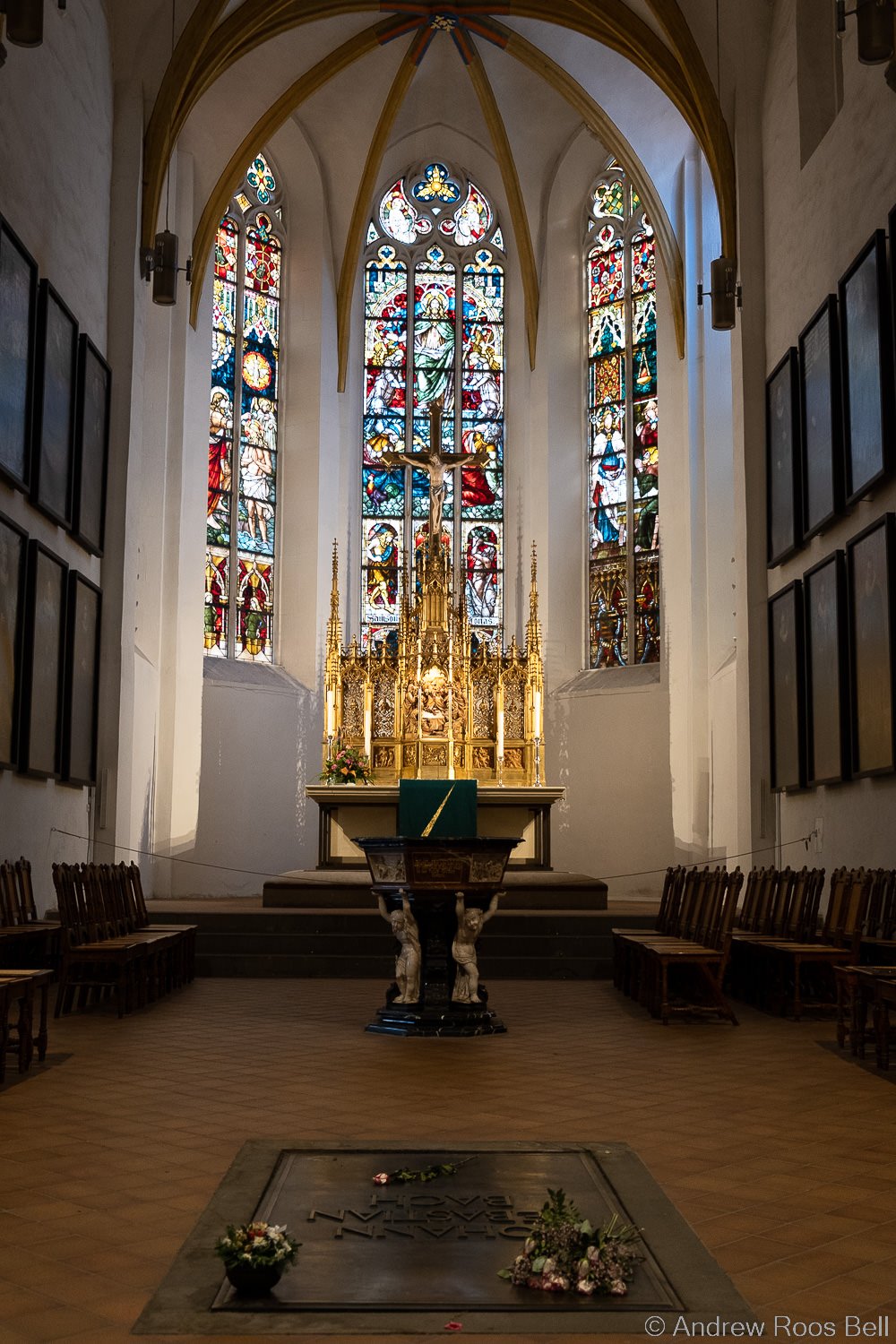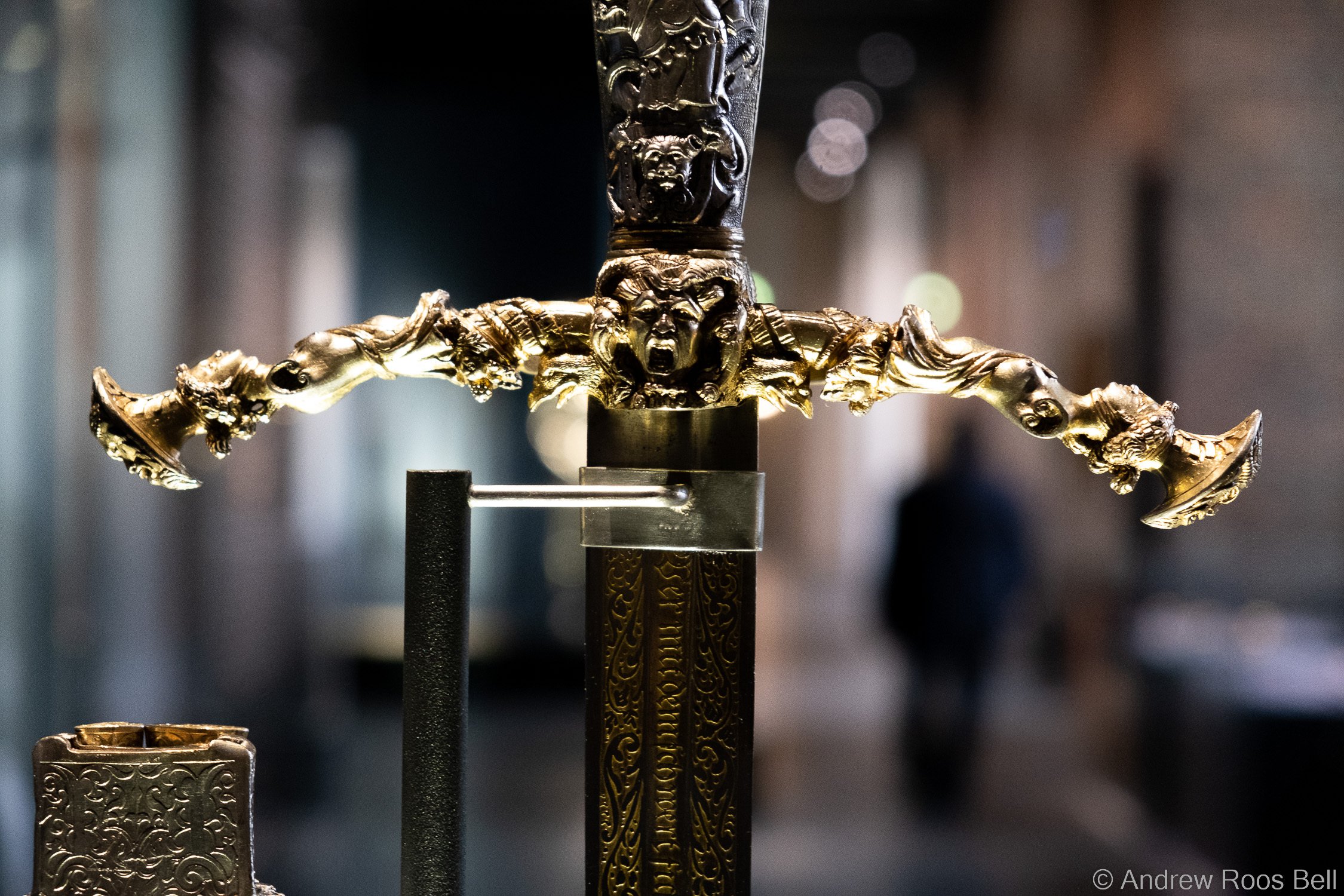Leipzig & Dresden
From Wittenberg it was not far to Leipzig, an ancient market city whose name I still cannot properly pronounce despite hearing it said many times. From the hulking main train terminal, a bustling tram whisked me to an inner suburb, where I stayed with an apartment building where you hung your clothes up in the attic, in a climate so cold and damp it’s a wonder anything ever dries out.
Leipzig is a town filled with historical buildings, stone towers popping up at every turn, and yet one of the most striking building I encountered was this crystalline neogothic Paulinum, the oratory of the University of Leipzig, which replaced the university church which had been destroyed by the communist government of East Germany back in the 60s. As with every place inhabited this long, the beauty of the built environment is inseparable from destruction – but this building is very beautiful.
I did not come to Leipzig for the university, however, but to see the town’s favorite son: Johann Sebastian Bach. Bach spent much of his career as the cantor of Leipzig’s Thomaskirche, shown above, and it was here that he composed much of the music that still pervades and defines our world today. He was buried at the church, but over the years as Bach’s fame grew and the church was rebuilt, he was moved incrementally closer to the altar, until things finally reached the point where it really should be called St. Bach’s Church instead of St. Thomas’, since he occupies a position more prominent than most monarchs in other churches.
After visiting the great composer and walking past the former home of Schumann, another great musician, I fell into a sort of arts and crafts fair at the applied arts museum, which I acquired a ticket to by accident, since I did not really understand what was being said. I don’t have any pictures, but it was a fascinating thing to see a modern day bazaar continuing in this ancient market town.
The next day I continued on to Dresden, a town only familiar to me as a place we destroyed during the war. The famous photograph of the city I had seen always depicted the Cathedral of the Holy Trinity’s gargoyles gaping out over the blasted wreck of the city.
I don’t know if I can really unpack my complex feelings about the bombing of cities during the war. If I think about civilians on the ground, I become very angry, and I don’t think that’s wrong, but I also think it can be a manifestation of a proud desire for moral superiority, a sort of arrogant purity. Then if you bring in the victims of German aggression, and factor in the righteous fury that seeks to blast a rampaging evil, it gets even more complicated. At the same time, I think that we have to hold ourselves to high moral standards in war, or else what’s the point of fighting – but there’s always the Sherman argument, which was once articulate by a very dear old friend, who had lived through the war as a child in his native Japan, and who was personally grateful that the planned invasion had bene averted by the bombing. But of course he did not live in Hiroshima. I also think of my great-great-uncle who navigated his heavy bomber into Germany and set the bomb targets, and who was ultimately killed by his own payload in April 1944. But today Germany is free and no longer a terror, and Dresden is peaceful and beautiful, and you would not know it had ever burned, were it not for the blackened stones.
Entering the core of the city I was struck by the enormity of this mural, the Furstenzug, which adorns the outer wall of the castle and depicts the many rulers of Dresden. These were the Electors of Saxony, and if you’re wondering why a powerful potentate’s primary title would simply be ‘Elector,’ allow me to introduce you to the insane political contraption known as the Holy Roman Empire. For centuries the land we now think of as Germany was a loose confederation of over a thousand principalities, ranging in size from vast provinces like Dresden’s own Saxony to small towns and abbeys. These were ruled by people with titles like Landgrave, Margrave, and even Bishop and King, but the few Electors held enormous power, because they inherited the right to choose the Emperor. But even this was not straightforward; you see, one of the traditional Electors was the King of Bohemia, which is now the Czech Republic. But Bohemia was neither a German-speaking kingdom nor really a part of the Holy Roman Empire (although I’ve read contradictory views on that, which speaks to the messiness of the whole situation), and its King was also elected by the local nobility. For many years what typically happened was that the Austrian Hapsburg Archduke would be elected King of Bohemia by the Czech nobility, and he would then turn around and in his capacity as king of a country whose language he did not necessarily even speak, he would vote to elect himself Emperor.
At any rate, some of these Electors of Saxony loved collecting, and in their palace you now can view their enormous trove of delights. Here are a very few of the many I saw:
Understand that these ivory spheres had to each be carved in situ within the outer sphere, from a single piece of ivory.
This is a sculpture of a real individual who was a very popular court fool in Dresden. Apparently there is a removable panel on the cart which reveals his bare bum. It’s fascinating to think about something like this being commissioned from a master craftsmen, all as a sort of crass joke celebrating in mockery a living person.
This depiction of an oriental court is one of the most lavish miniatures I’ve ever seen, and if you’re ever in Dresden you have to see it.
I was initially drawn to this weapon because it’s a massive sword, and I was once a child obsessed with swords, but on closer examination it suddenly becomes very strange and arresting, because of the shrieking demonic face above the blade. I’m not superstitious, but I would think twice about killing someone with this.
This is a sample of the Electoral drip. Just imagine when this was all the rage.
After my time in the palace, I strolled through a city bustling with life in the gentle October air. The squares were filled with people laughing and enjoying themselves. Along the Elbe the sky drew down a lush curtain, even as some sort of calm march made its way into the city, preceded by the cobalt flicker of police vans.
The next day I spent hours in the Old Master’s Gallery of the Zwinger, but I don’t have any pictures of that, because I don’t take pictures of two-dimensional paintings. Then, I crossed the bridge through a mist of wind-driven droplets, and caught a train for the hills.



















